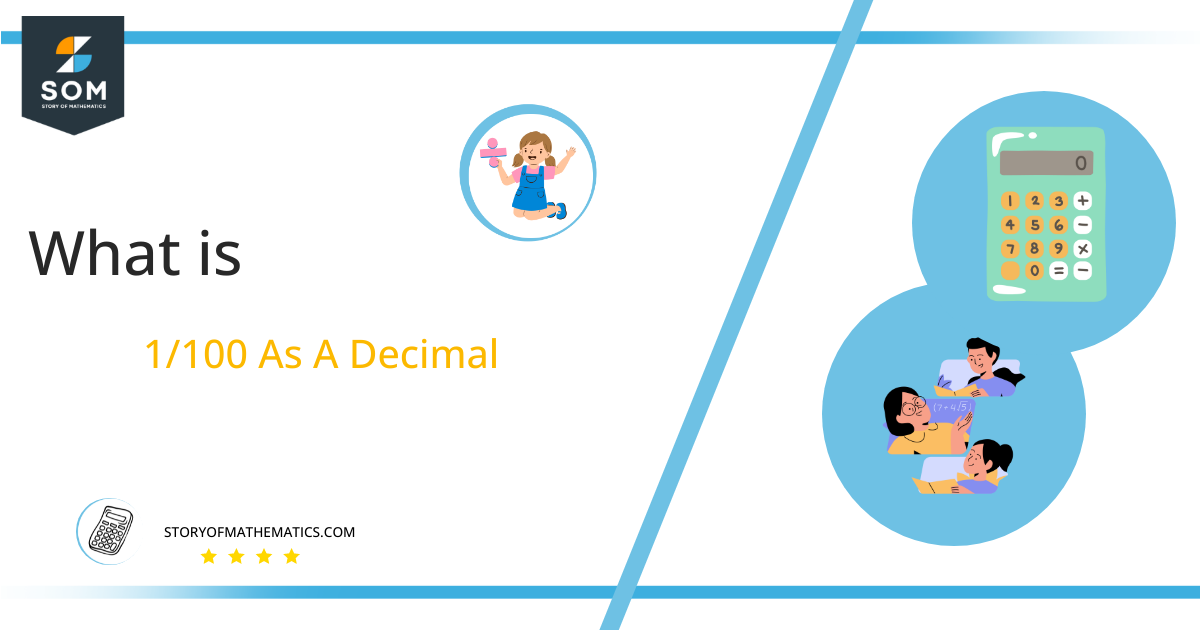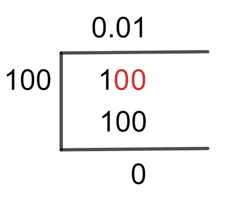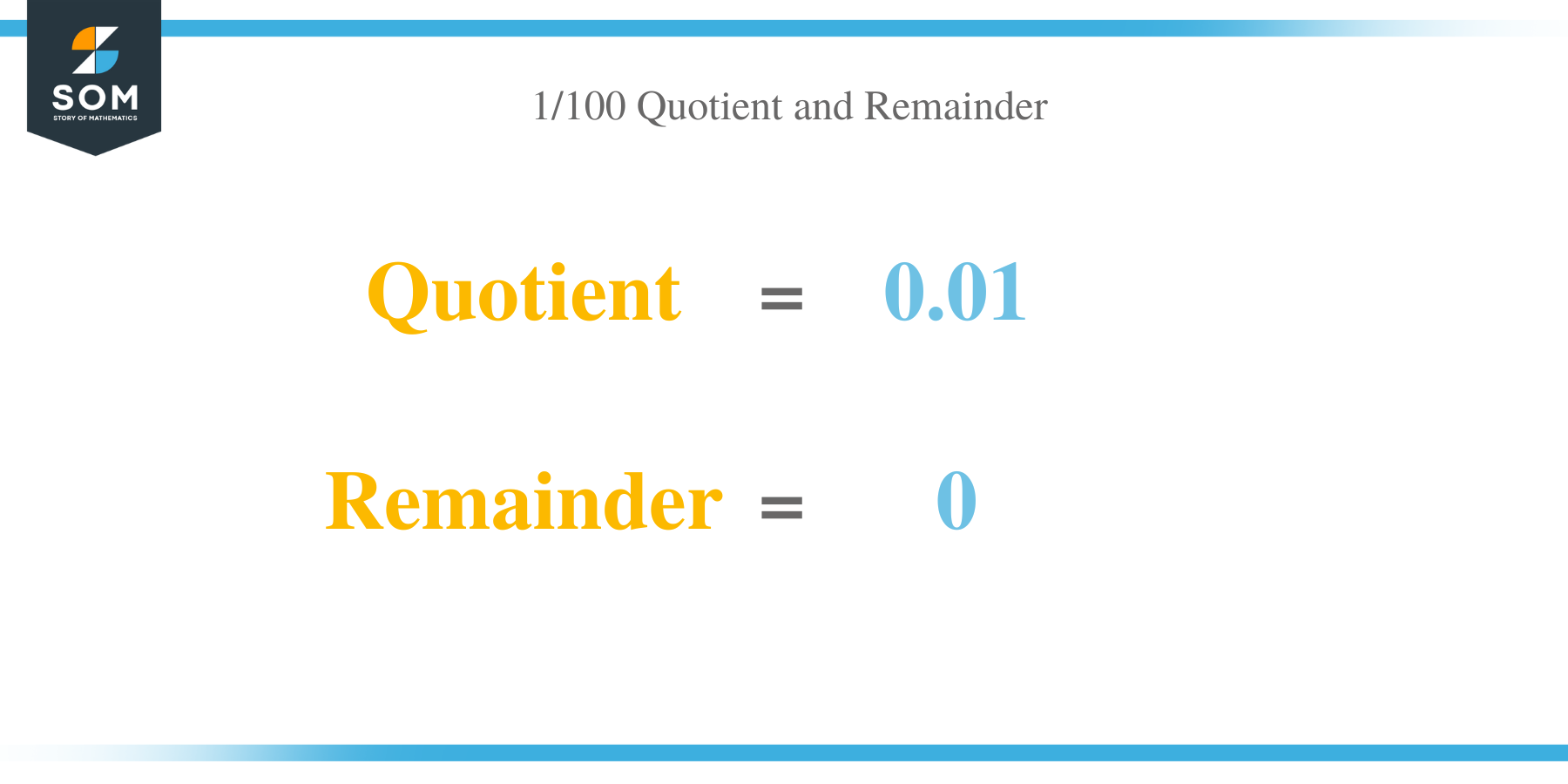What Is 1/100 as a Decimal + Solution With Free Steps

The fraction 1/100 as a decimal is equal to 0.04.
When there is a link between two numbers that include division, a fraction is employed to represent them. Fractions are generally represented in p/q form, where the p in the fraction is for the numerator, and q is for the denominator while the line that separates both is known as the division line.
Division of fractions is a little difficult but we can make it easier by using the method called Long Division method.
Solution
Before we can start tackling the problem at hand, we must fully understand the ideas behind the problem. When splitting a fraction, the first two ideas we need to understand are our Dividend and Divisor. The numerator of the fraction is called the dividend, and the denominator is called the divisor. In the given fraction of 1/100, the dividend is 1, and the divisor is 100.
Dividend =1
Divisor = 100
When we apply mathematical operations to a problem, we get the desired result. The result we arrive at after applying the aforementioned method to resolve the fraction is known as the Quotient. In essence, this expression refers to the best possible result for the fraction.
Quotient = Dividend $ \div $ Divisor = 1 $ \div $ 100
The fraction can be solved by using the long division method as:
Figure 1
1/100 Long Division Method
We can convert the fractions to decimal value by using the long division method as:
1 $ \div $ 100
When we solve fractions, the outcome can be greater than or less than one. It depends on the numerator and denominator. If the numerator is greater than the denominator, then our result will be greater than one.
Similarly, if the fraction has a numerator less than the denominator, we end up with a result of less than one. So here is the case of the numerator being less than the denominator, and one thing is understood the answer will be less than one.
Another term that is important to be introduced here is that when we divide two numbers that are not completely divisible by each other, we end up having a remaining number. That number is known as the Remainder.
For the given fraction, we will first insert a decimal point into the quotient, which will add zero to the remainder’s right, resulting in a remainder of 10. Still, the remainder is less than the divisor, so we are not able to divide the numbers. For that, we will add another zero to the right side of the remainders, and for putting two consecutive zeros together, we will add one zero to the quotient.
So by doing this, our new remainder is 100, and now the division is done as under.
100 $ \div $ 25 = 3
Where:
25 x 4 = 100
The Remainder we now have is 0 with the resulting Quotient of 0.04 for the given fraction of 1/100.
Images/mathematical drawings are created with GeoGebra.
2/25 As A Decimal | Fractions to Decimals List | 4 3/8 As A Decimal
